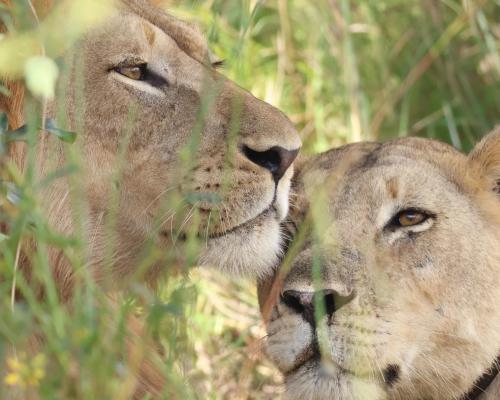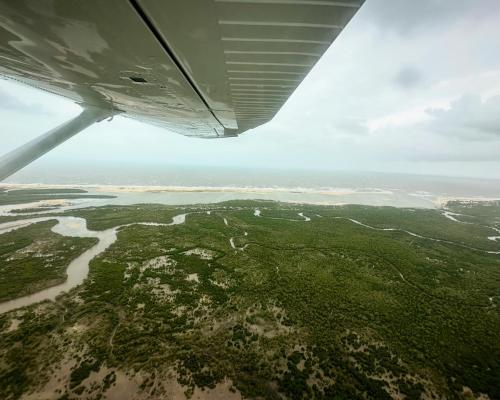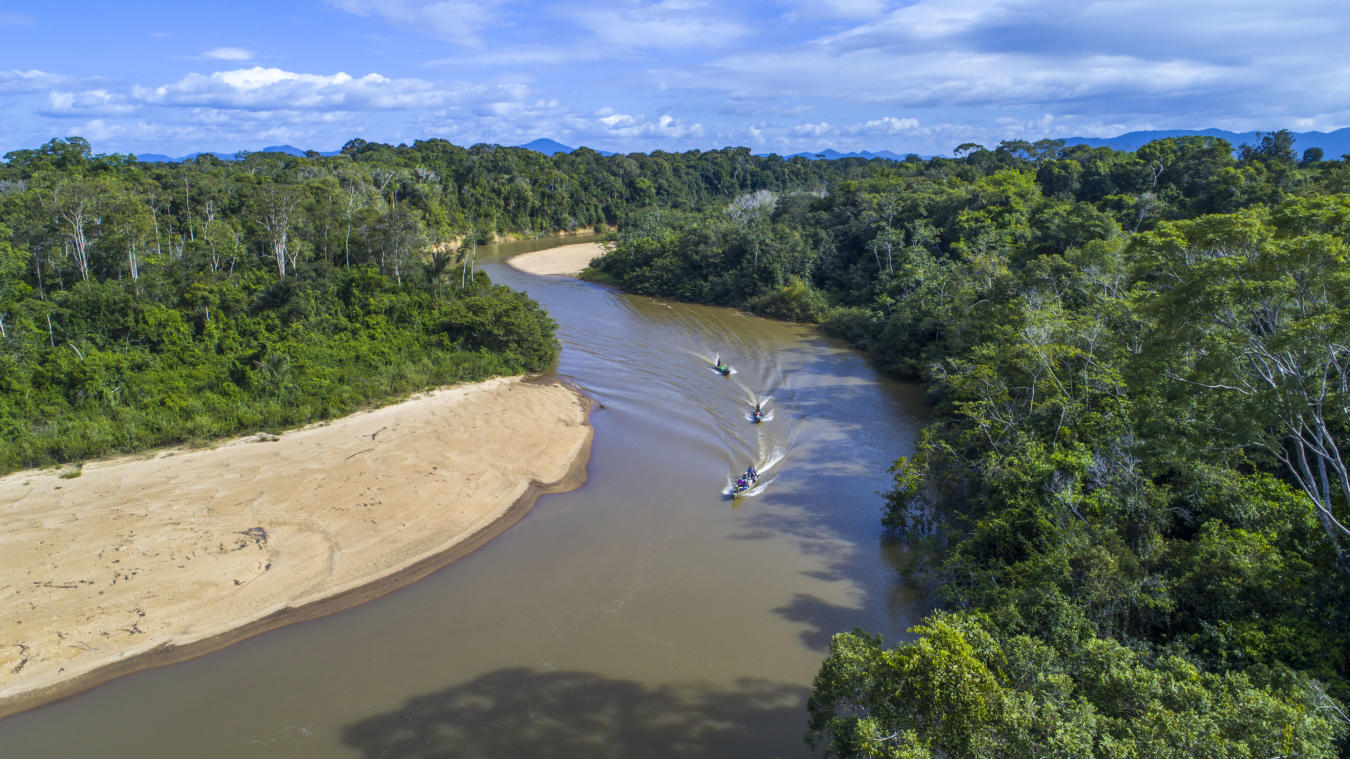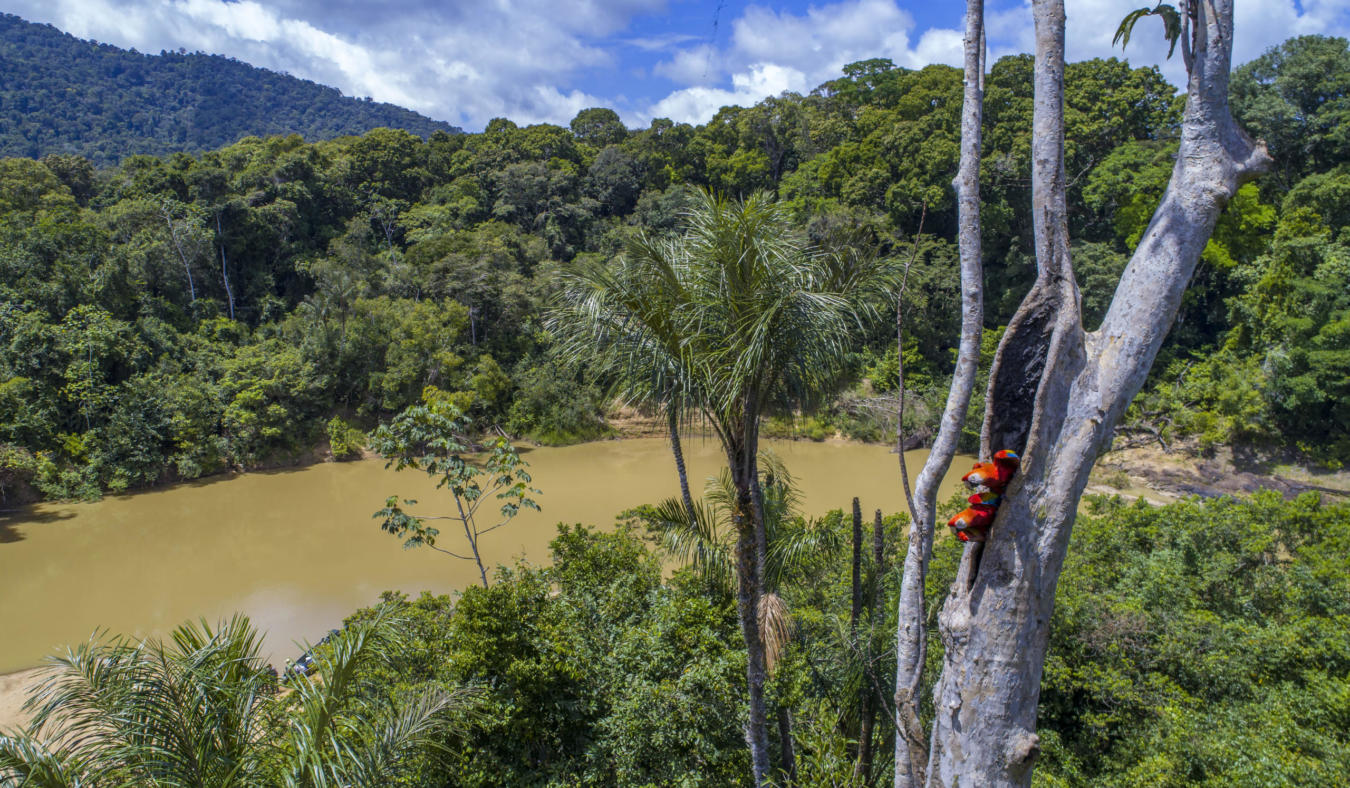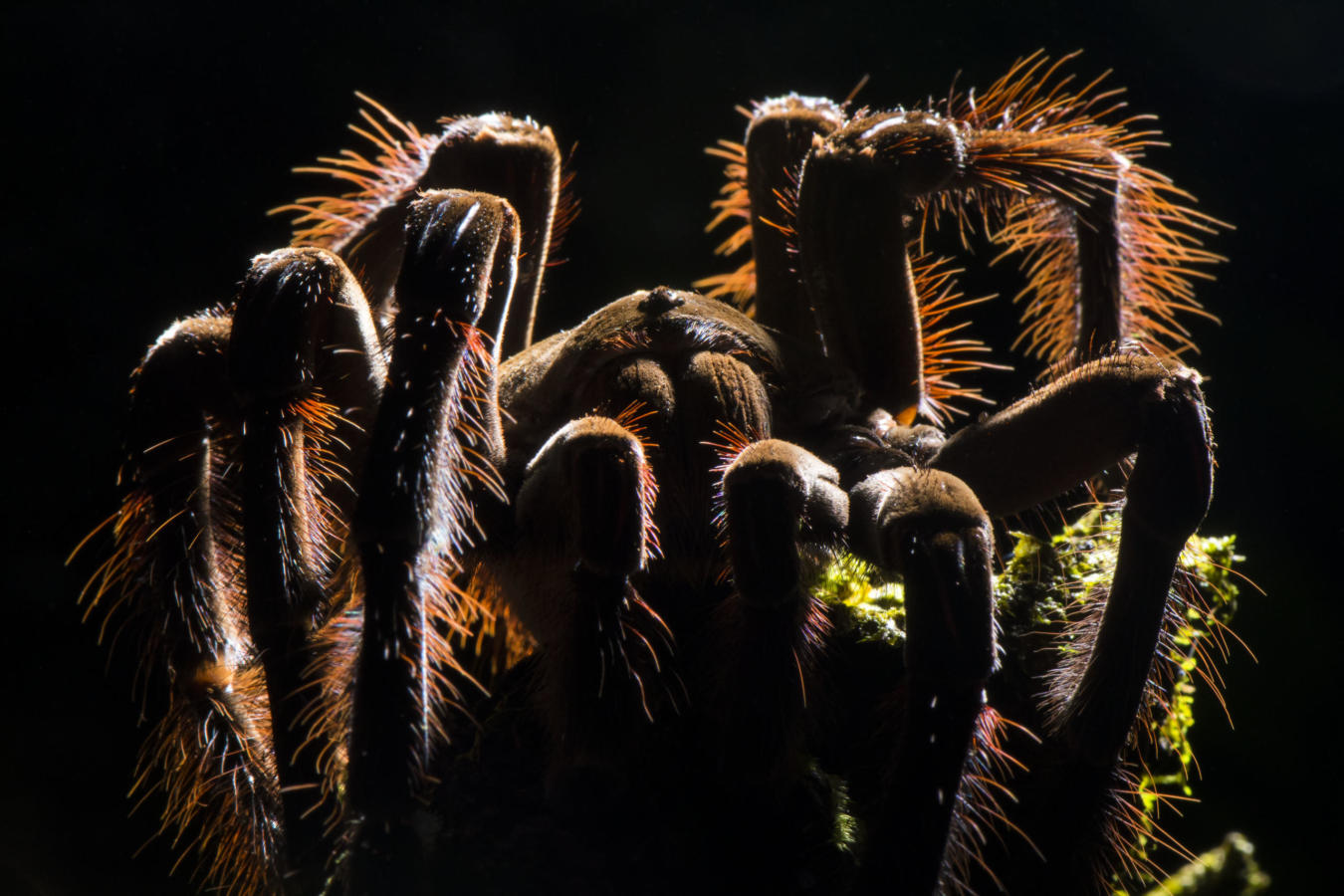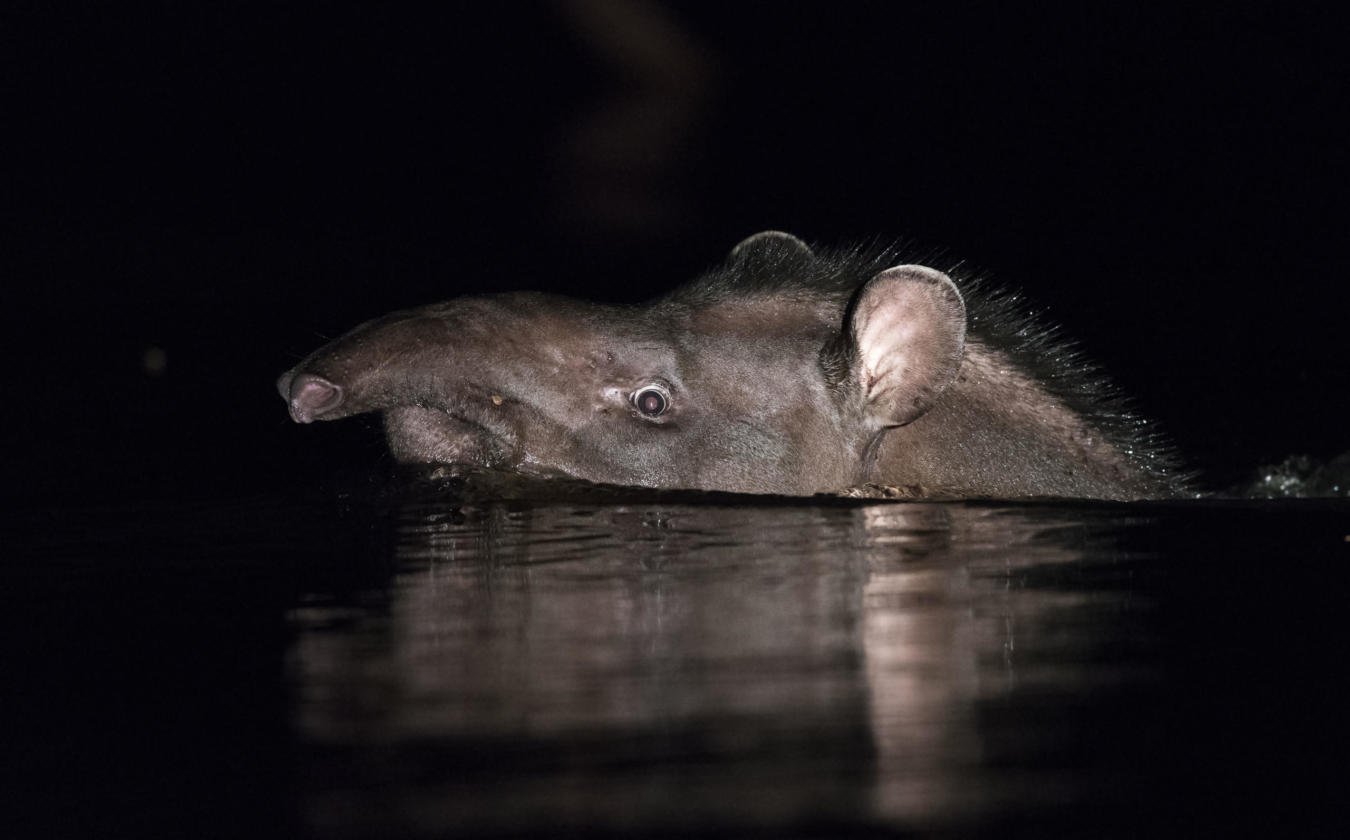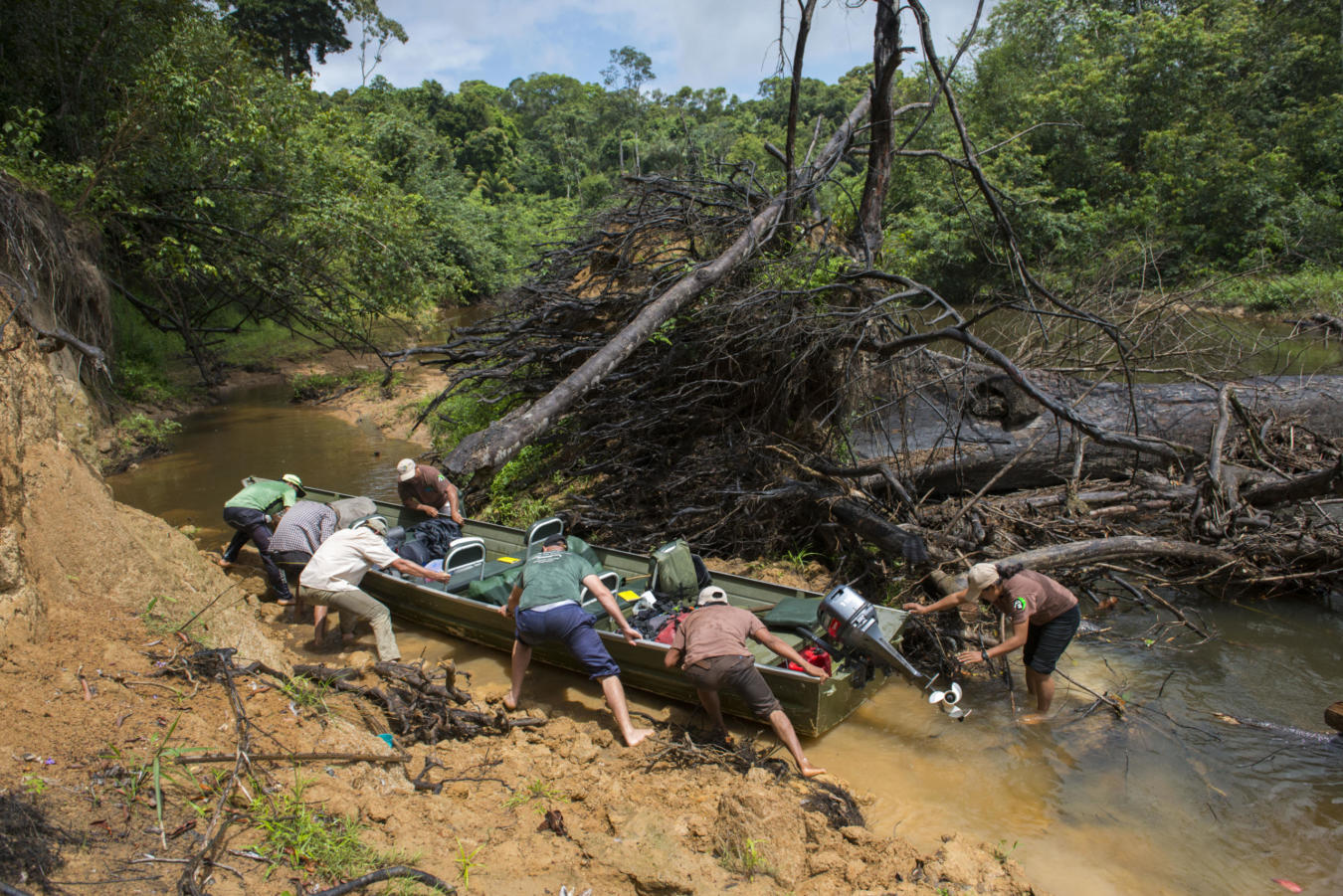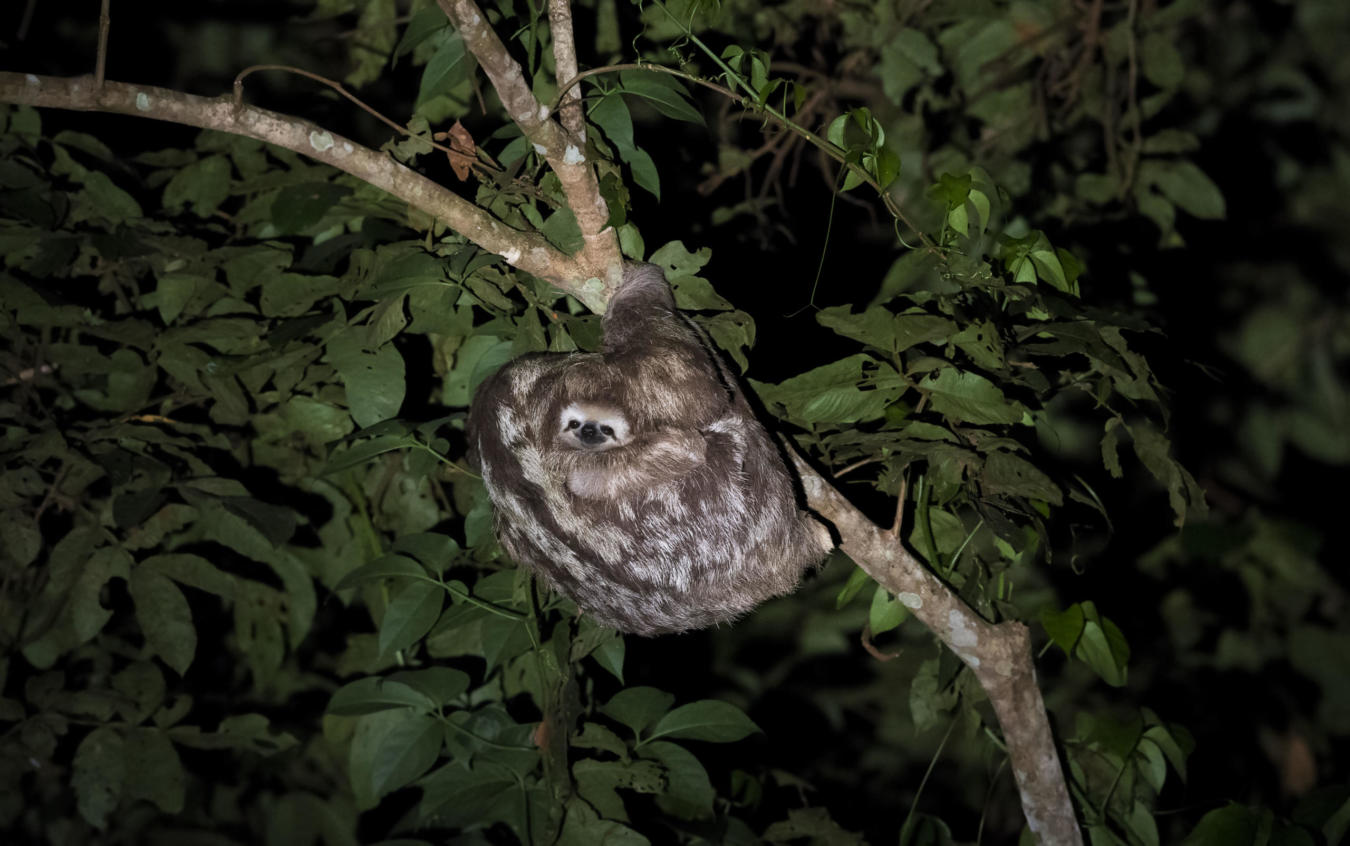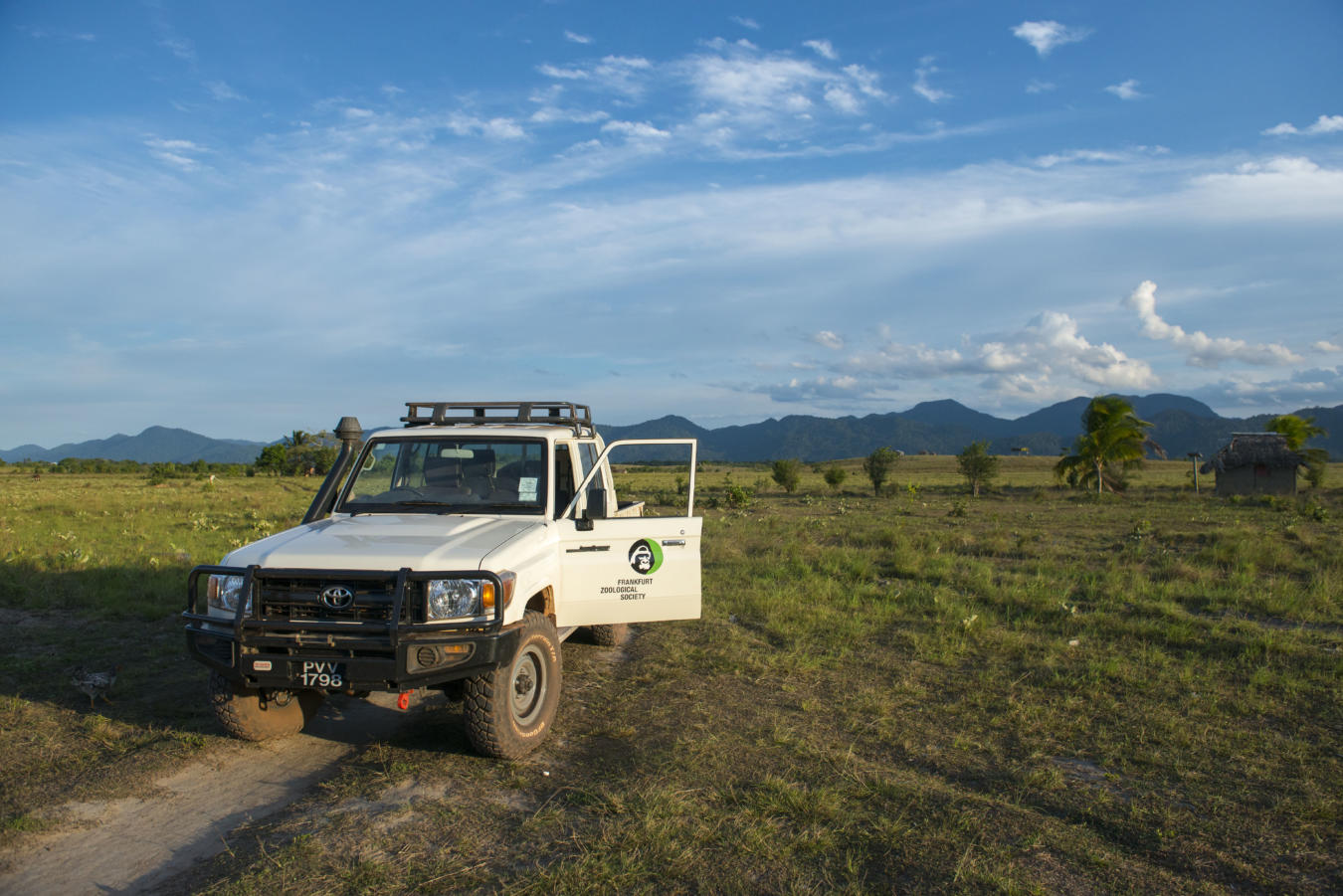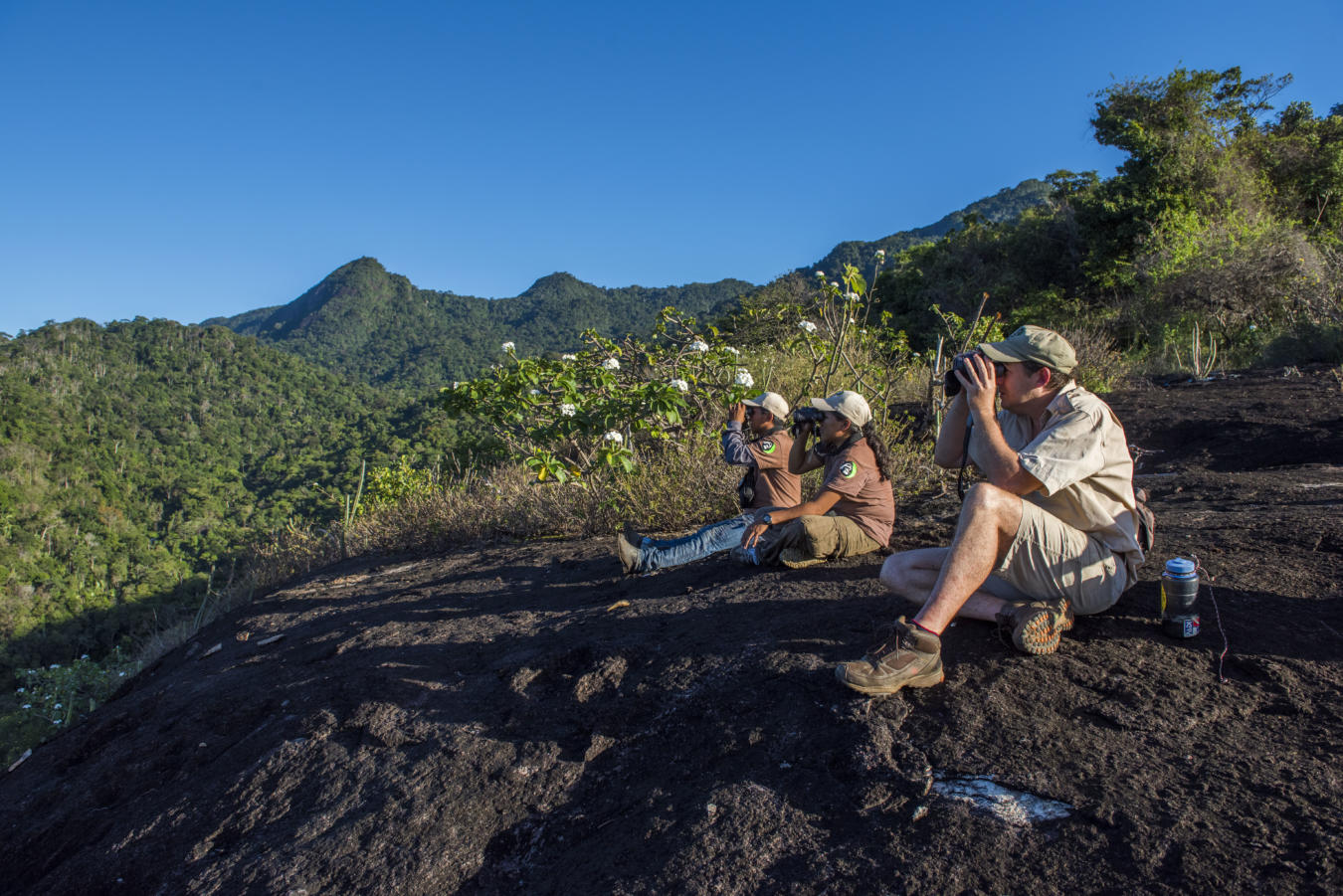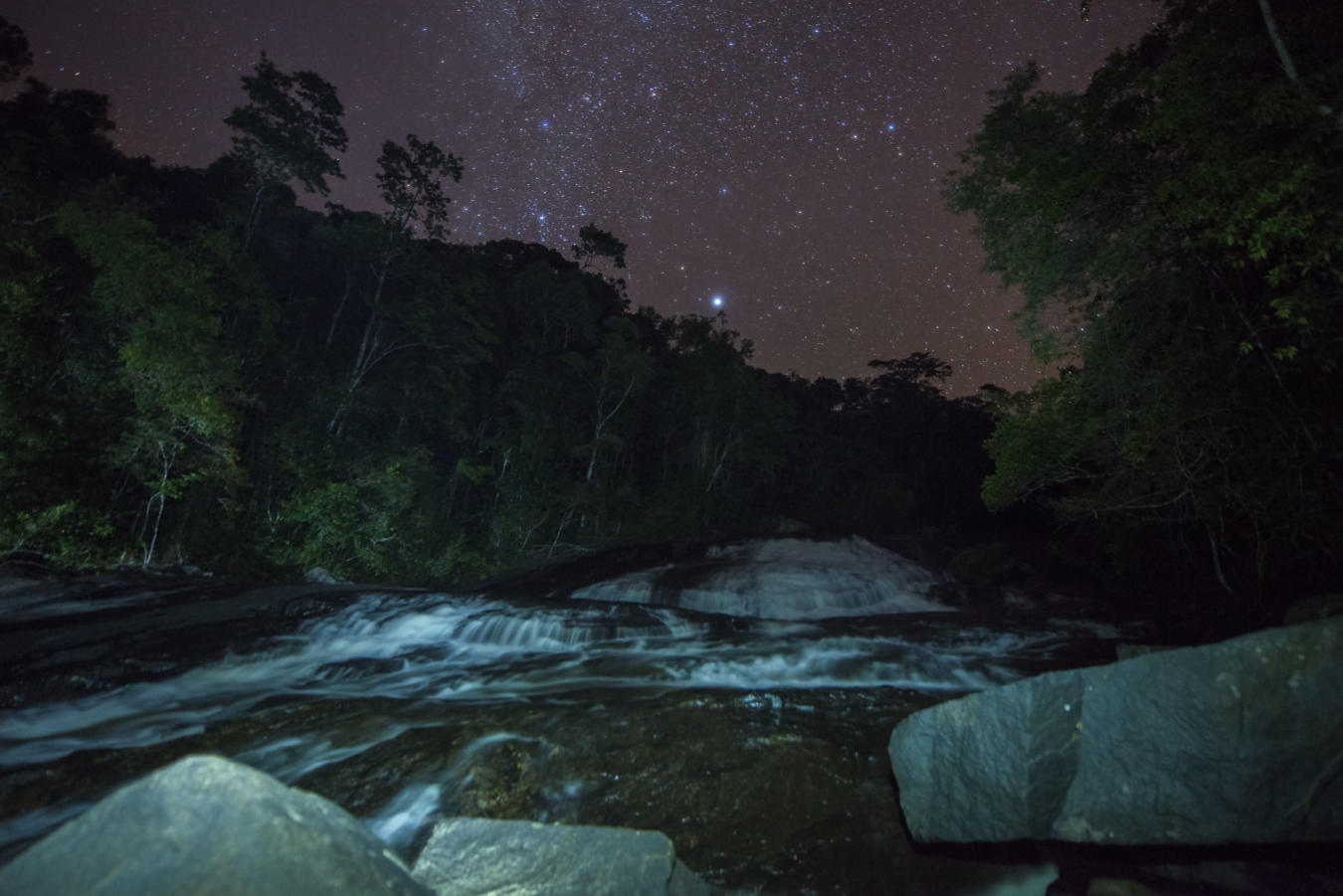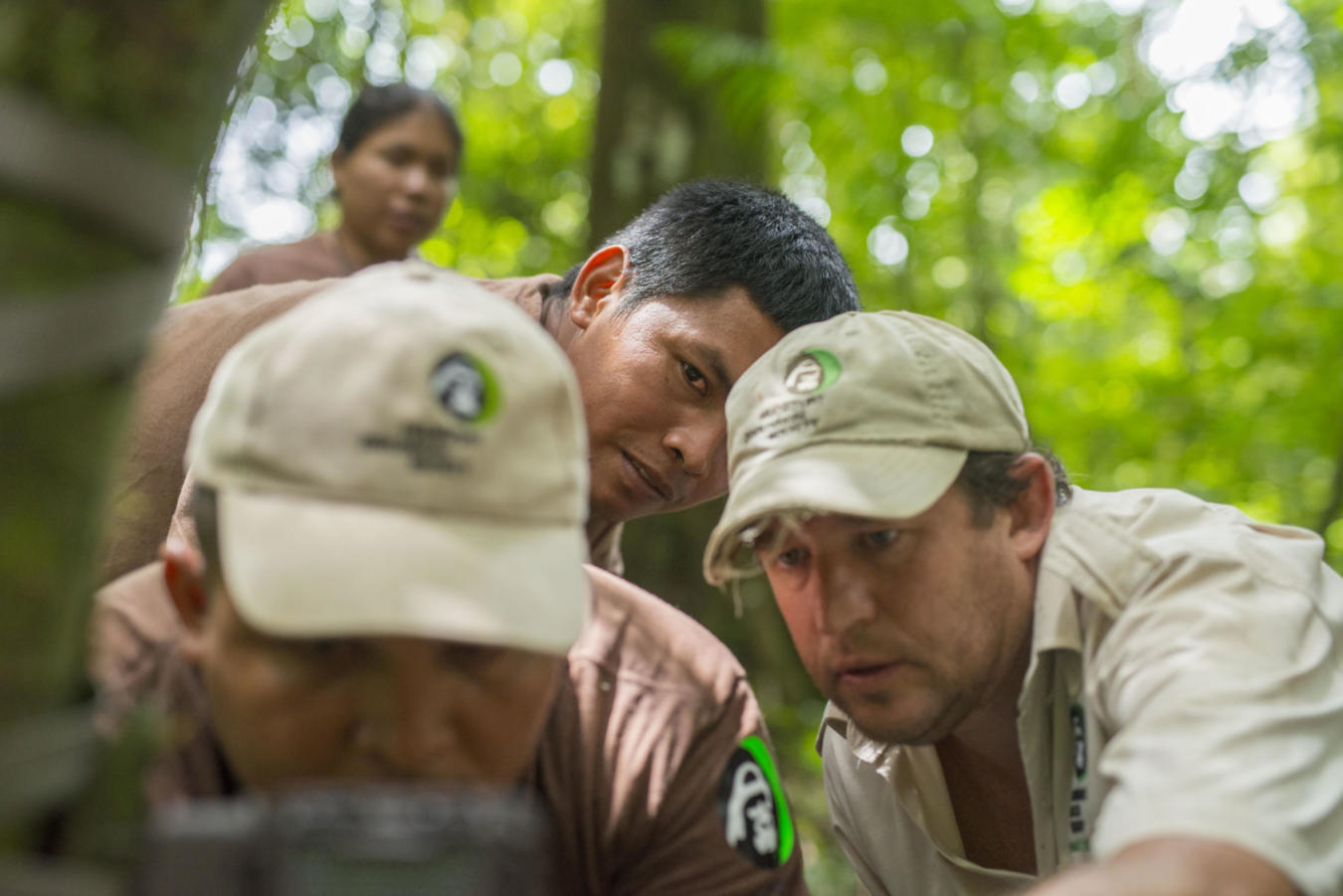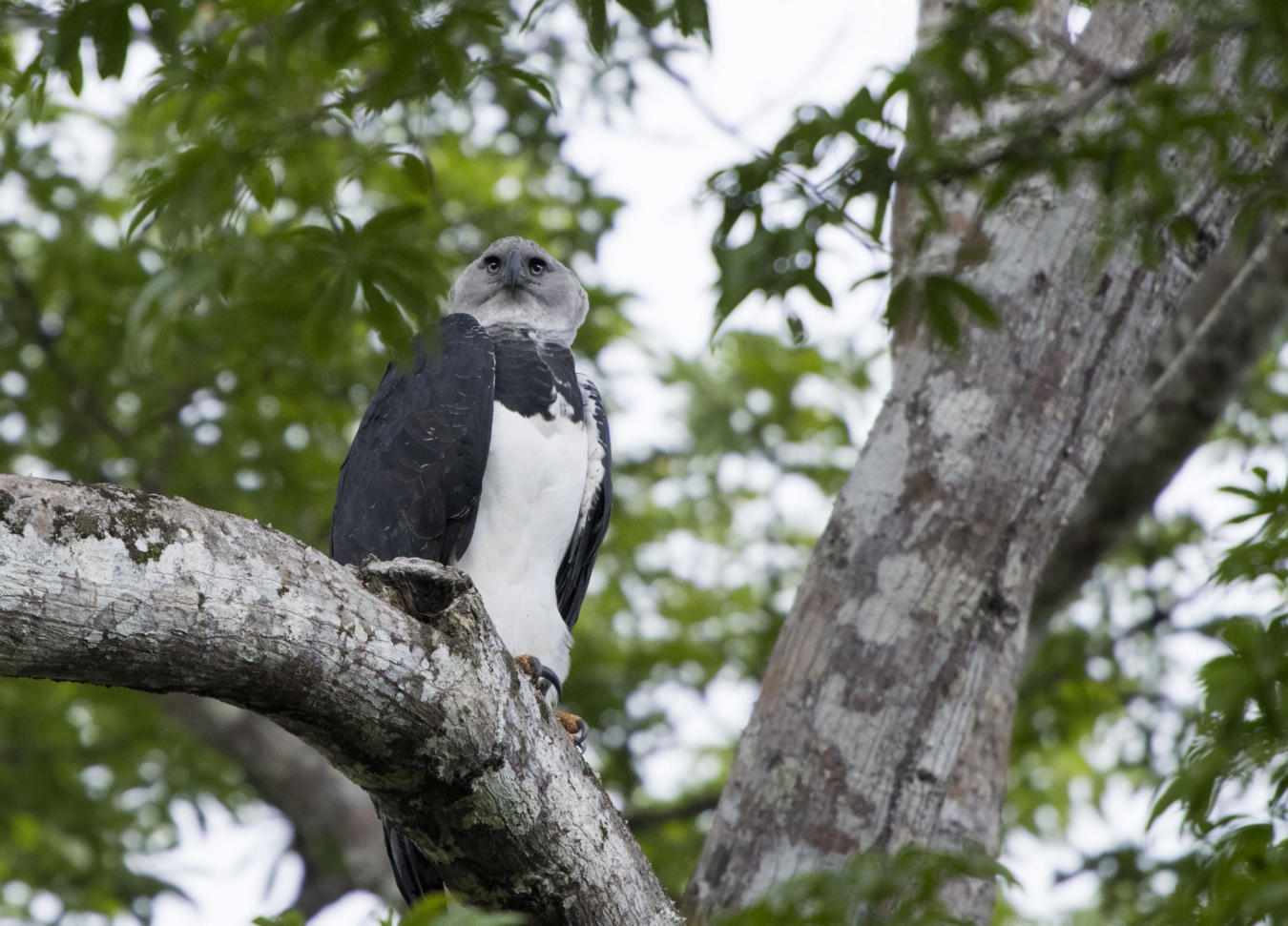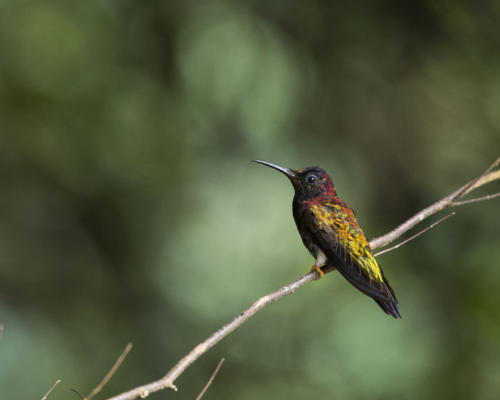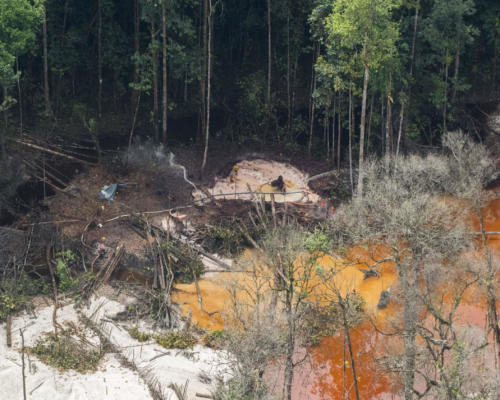Containing more than 6,000 square kilometers of primary rainforest, rock formations rising up to 1,300 meters in height, waterfalls and countless caves, the Kanuku Mountains region in the south of the country represents a unique area, most of which is largely unexplored.
The impressive array of wildlife extends from the goliath bird spider, arapaima fish, giant river otter, oilbird, and harpy eagle through to the jaguar and giant anteater. In 2011, the Kanuku Mountains were declared a protected area.
As pressure on surrounding natural areas increases, so does the importance of protecting the Kanuku Mountains as a refuge for rare and endangered species.
- Project name: Protection and Management of the Kanuku Mountains Protected Area
- Protected area size: 6,110 km²
- Project start: 2014
- Kanuku Mountains
- How we support the Kanuku Mountains
- Partners
- News
- back to top
Training and support for park rangers in the organization and implementation of field work, maintenance of equipment and regular analysis of high-resolution satellite data for early detection of illegal activities
Supporting design and implementation of biodiversity surveys and ecological monitoring of key species, including river turtles and the systematic use of camera trapping to record large mammals. This provides a good indication of the overall state of the wildlife populations and the protected area
FZS promotes education about the value and importance of the Kanuku Mountains Protected Area in the 21 surrounding communities by supporting nature camps for children and information and environmental education centers in Lethem and at the PAC field stations in the Kanuku Mountains. We also support the annual turtle festival in the village of Sand Creek.
Successful conservation is always the result of great partnerships and teamwork. We collaborate with national authorities, local communities, and conservation organizations who make our conservation work possible.
-
 Protected Areas Commission (PAC) of Guyana
Protected Areas Commission (PAC) of Guyana -
 Office of the President
Office of the President -
 Stiftung Farald von Wedekind
Stiftung Farald von Wedekind -
 Stiftung Temperatio
Stiftung Temperatio -
 South Rupununi Conservation Society
South Rupununi Conservation Society






